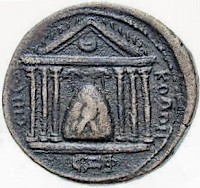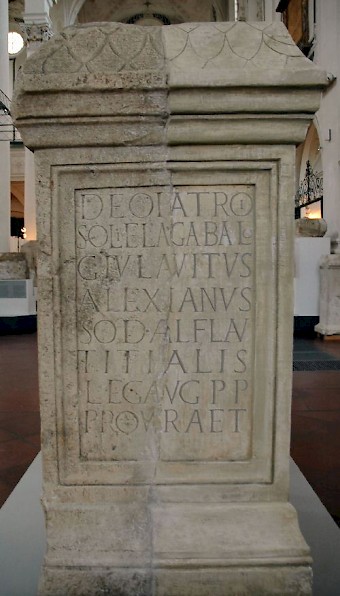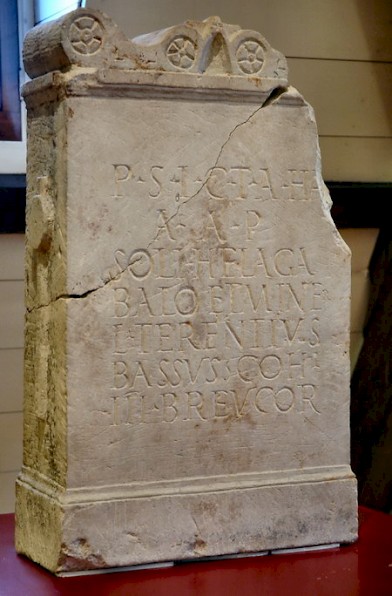Elagabal
Elagabal (Aramaic Ilaha Gabal, the "lord of the mountain"), Syrian sun god. His cult was introduced in Rome by the boy-emperor Heliogabalus (218-222).
The pantheon of Emesa

All gods of the pantheon of the Arab city Emesa, in Syria, had Semitic names, with one exception: the supreme god Elagabal, who represented the sun. His unusual name suggests an earlier origin and suggests this god was a local deity, related to similar pre-Arabian gods from Canaan. The Aramaic form of name of Elagabal is Ilaha Gabal, meaning "God of the mountain".
Mountain gods had been known in Anatolia, Syria, and Palestine since Hittite times, and they continued to be venerated up until the Roman age. They were often portrayed with eagles. At a later stage, the worshippers of Elagabal were influenced by the cult of the Babylonian sun god Šamaš. Elagabal has also been compared to the Chaldaean god Gibil, which can be translated as "god of the black stone". Gebal is a Semitic root which means "to create".
Triads were common in Syrian and Mesopotamian cities, and Elagabal, the personification of a male principle and fertile warmth, had two female consorts of Semitic origin:
- Atargatis can be compared to the Phrygian goddess Cybele, the "great mother";
- the other female deity, Astarte, resembles Aphrodite. She offered water and fertility to the people, and was immensely popular in Syria.
The cult of Elagabal

According to the Greek-Roman historian Herodian, who witnessed how the cult of Sol Invictus (the invincible sun) Elagabal was introduced in Rome by the emperor Heliogabalus (218-222), the worship of Elagabal was not a local phenomenon from Emesa, but was known from other places too. Sacrifices were brought to Emesa by the inhabitants of the surrounding areas. It is assumed that the cult of Elagabal was the principal cult of Syria and that Emesa was its main religious center.
The Syrian sun god was also known outside Syria. Iin the mid-second century CE, a dedication was made to Elagabal in a town called Laurium in Germania Inferior, at the opposite end of the Roman world (more...).
Elagabal had always been worshipped with much pomp and devotion, accompanied by music and dancing. He had no statue, but was venerated as a black stone with a round base and a pointed top. This conic stone, a baetyl, showed several indefinable markings. On coins, it is usually shown with an eagle spreading its wings over the object in a protective way. Such stones were very important in Syrian-Phoenician religion.

Herodian gives us a detailed account of the most important festival of the god, which, he says, was celebrated in mid-summer and shows, according to modern scholars, great similarity to the Akitu festival (the Babylonian New Year), which was celebrated in the spring. During the festival, the god Marduk was carried around in a chariot decorated with gold, silver, and precious gems. He was accompanied by the images of the other gods, which were brought to a festival house outside Babylon. The king brought gifts and sacrifices to the gods and in return they gave the people oracles. The day after the festivities the god and his retinue were brought back to the city.
All cult acts were conducted by a high priest. Eastern priests served only their own deity and did everything in their power to propagate the cult. Any man, no matter what his status was, could fill a priestly office. This was quite different from the situation in Rome, where priests were usually of noble birth and combined their office with political or administrative offices. This created tensions when Elagabal was introduced in the west, a subject that will be discussed here.